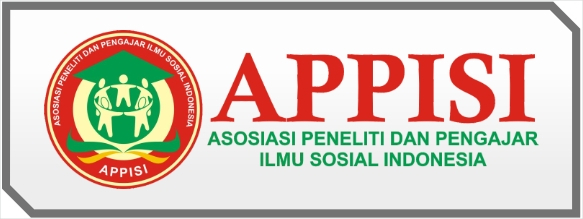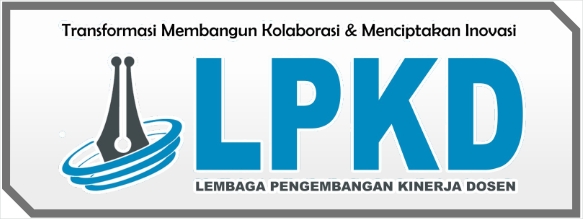Realitas Virtual Dan Penelitian Pendidikan Dasar: Tren Saat Ini dan Arah Masa Depan
DOI:
https://doi.org/10.55606/cendikia.v1i4.1317Keywords:
Virtual reality, educational research, current trends, future directionsAbstract
This research explores the utilization of virtual reality (VR) in educational settings and examines current trends, future directions, benefits, and challenges associated with its implementation. The purpose of this library research is to provide an overview of the existing literature on VR and educational research, highlighting the potential of VR technology to enhance traditional teaching methods and improve student engagement, motivation, and learning outcomes. The method used for this research is a comprehensive review and analysis of relevant scholarly articles, books, and reports from academic databases and libraries. The results indicate that VR has been utilized in educational research to create immersive and interactive learning experiences, personalize instruction, bridge the gap between abstract concepts and concrete understanding, and foster critical thinking and problem-solving skills. VR also presents challenges such as cost, accessibility, curriculum integration, teacher training, technical limitations, health and safety concerns, privacy, and ethics. However, the research concludes that with careful planning, adequate resources, and proper support, VR has the potential to revolutionize education and prepare students for a technologically advanced future. Further research and innovation in areas such as immersion, AI integration, collaboration, assessment, accessibility, and ethics are recommended to fully leverage the benefits of VR in educational settings.
References
Aditia, D., Ariatama, S., & Ma’ruf, A. (2020). HISTOGRAM (history in hologram): Fun learning media to learn ancient relics of Indonesia. Pancaran Pendidikan, 9(4).
Adamovich, S. V., Fluet, G. G., Tunik, E., & Merians, A. S. (2009). Sensorimotor training in virtual reality: a review. NeuroRehabilitation, 25(1), 29-44.
Alfalah, S. F. (2018). Perceptions toward adopting virtual reality as a teaching aid in information technology. Education and Information Technologies, 23, 2633-2653.
Bailenson, J. N., Yee, N., Blascovich, J., Beall, A. C., Lundblad, N., & Jin, M. (2008). The use of immersive virtual reality in the learning sciences: Digital transformations of teachers, students, and social context. The Journal of the Learning Sciences, 17(1), 102-141.
Bailenson, J. (2018). Experience on demand: What virtual reality is, how it works, and what it can do. WW Norton & Company.
Berg, L. P., & Vance, J. M. (2017). Industry use of virtual reality in product design and manufacturing: a survey. Virtual reality, 21, 1-17.
Bowman, D. A., & McMahan, R. P. (2007). Virtual reality: how much immersion is enough?. Computer, 40(7), 36-43.
Bogusevschi, D., Muntean, C., & Muntean, G. M. (2020). Teaching and learning physics using 3D virtual learning environment: A case study of combined virtual reality and virtual laboratory in secondary school. Journal of Computers in Mathematics and Science Teaching, 39(1), 5-18.
Brownridge, P. (2020). From chalkboards to virtual reality: Exploring the development and implementation of virtual reality in United States History classrooms. Rowan University.
Burdea, G. C., & Coiffet, P. (2003). Virtual reality technology. John Wiley & Sons.
Checa, D., & Bustillo, A. (2020). A review of immersive virtual reality serious games to enhance learning and training. Multimedia Tools and Applications, 79, 5501-5527.
Chen, Z. H., & Yang, T. W. (2018, November). Experiencing the journey of confucius and learning in a virtual reality-based game. In 26th International Conference on Computers in Education, ICCE 2018 (pp. 634-636). Asia-Pacific Society for Computers in Education. Checa, D., & Bustillo, A. (2020). A review of immersive virtual reality serious games to enhance learning and training. Multimedia Tools and Applications, 79, 5501-5527.
Chen, Z. H., & Yang, T. W. (2018, November). Experiencing the journey of confucius and learning in a virtual reality-based game. In 26th International Conference on Computers in Education, ICCE 2018 (pp. 634-636). Asia-Pacific Society for Computers in Education.
Chen, P. H. (2020). The Design of Applying Gamification in an Immersive Virtual Reality Virtual Laboratory for Powder-Bed Binder Jetting 3DP Training. Education Sciences, 10(7), 172.
Cheng, A., Yang, L., & Andersen, E. (2017, May). Teaching language and culture with a virtual reality game. In Proceedings of the 2017 CHI conference on human factors in computing systems (pp. 541-549).
Cheng, M. T., Chen, J. H., Chu, S. J., & Chen, S. Y. (2015). The use of serious games in science education: a review of selected empirical research from 2002 to 2013. Journal of computers in education, 2, 353-375.
Dede, C. J., Jacobson, J., & Richards, J. (2017). Introduction: Virtual, augmented, and mixed realities in education. Virtual, augmented, and mixed realities in education, 1-16.
Degli Innocenti, E., Geronazzo, M., Vescovi, D., Nordahl, R., Serafin, S., Ludovico, L. A., & Avanzini, F. (2019). Mobile virtual reality for musical genre learning in primary education. Computers & Education, 139, 102-117.
De Freitas, S., & Neumann, T. (2009). The use of ‘exploratory learning’for supporting immersive learning in virtual environments. Computers & Education, 52(2), 343-352.
Du, J., Zou, Z., Shi, Y., & Zhao, D. (2018). Zero latency: Real-time synchronization of BIM data in virtual reality for collaborative decision-making. Automation in Construction, 85, 51-64.
Duncan, I., Miller, A., & Jiang, S. (2012). A taxonomy of virtual worlds usage in education. British Journal of Educational Technology, 43(6), 949-964.
Eaves, D. L., Breslin, G., Van Schaik, P., Robinson, E., & Spears, I. R. (2011). The short-term effects of real-time virtual reality feedback on motor learning in dance. Presence: Teleoperators and Virtual Environments, 20(1), 62-77.
Earnshaw, R. A. (Ed.). (2014). Virtual reality systems. San Diego, Academic press.
Farshid, M., Paschen, J., Eriksson, T., & Kietzmann, J. (2018). Go boldly!: Explore augmented reality (AR), virtual reality (VR), and mixed reality (MR) for business. Business Horizons, 61(5), 657-663.
Farsi, M., Munro, M., & Al-Thobaiti, A. (2015, July). The effects of teaching primary school children the Islamic prayer in a virtual environment. In 2015 Science and Information Conference (SAI) (pp. 765-769). IEEE.
Ficarra, B. A. R. B. A. R. A. (2020). Virtual reality, augmented reality, and mixed reality. Emerging Technologies for Nurses: Implications for Practice, 95-126.
Freina, L., & Ott, M. (2015, April). A literature review on immersive virtual reality in education: state of the art and perspectives. In The international scientific conference elearning and software for education (Vol. 1, No. 133, pp. 10-1007).
Friedman, D., Pizarro, R., Or-Berkers, K., Neyret, S., Pan, X., & Slater, M. (2014). A method for generating an illusion of backwards time travel using immersive virtual reality—an exploratory study. Frontiers in psychology, 5, 943.
Geraci, R. M. (2010). Apocalyptic AI: Visions of heaven in robotics, artificial intelligence, and virtual reality. Oxford University Press.
Goulding, J., Nadim, W., Petridis, P., & Alshawi, M. (2012). Construction industry offsite production: A virtual reality interactive training environment prototype. Advanced Engineering Informatics, 26(1), 103-116.
Hadi, Sutrisno. (2002). Metodelogi Research, Yogyakarta, Andi Offset.
Hu-Au, E., & Lee, J. J. (2017). Virtual reality in education: a tool for learning in the experience age. International Journal of Innovation in Education, 4(4), 215-226.
Huang, H. M., Rauch, U., & Liaw, S. S. (2010). Investigating learners’ attitudes toward virtual reality learning environments: Based on a constructivist approach. Computers & Education, 55(3), 1171-1182.
Huang, C. L., Luo, Y. F., Yang, S. C., Lu, C. M., & Chen, A. S. (2020). Influence of students’ learning style, sense of presence, and cognitive load on learning outcomes in an immersive virtual reality learning environment. Journal of Educational Computing Research, 58(3), 596-615.
Huang, H., & Liaw, S.. (2018, February 23). An Analysis of Learners’ Intentions Toward Virtual Reality Learning Based on Constructivist and Technology Acceptance Approaches. https://scite.ai/reports/10.19173/irrodl.v19i1.2503
Hussein, M., & Nätterdal, C. (2015). The benefits of virtual reality in education-A comparision Study.
Hill‐Smith, C. (2011). Cyberpilgrimage: The (virtual) reality of online pilgrimage experience. Religion Compass, 5(6), 236-246.
Jerald, J. (2015). The VR book: Human-centered design for virtual reality. Morgan & Claypool.
Johnson, C. D. (2018). Using virtual reality and 360‐degree video in the religious studies classroom: An experiment. Teaching Theology & Religion, 21(3), 228-241.
Jun, G. (2020). Virtual reality church as a new mission frontier in the metaverse: Exploring theological controversies and missional potential of virtual reality church. Transformation, 37(4), 297-305.
Kamińska, Dorota, Tomasz Sapiński, Sławomir Wiak, Toomas Tikk, Rain Eric Haamer, Egils Avots, Ahmed Helmi, Cagri Ozcinar, and Gholamreza Anbarjafari. "Virtual reality and its applications in education: Survey." Information 10, no. 10 (2019): 318.
Kavanagh, S., Luxton-Reilly, A., Wuensche, B., & Plimmer, B. (2017). A systematic review of virtual reality in education. Themes in Science and Technology Education, 10(2), 85-119.
Keshner, E. A., Weiss, P. T., Geifman, D., & Raban, D. (2019). Tracking the evolution of virtual reality applications to rehabilitation as a field of study. Journal of neuroengineering and rehabilitation, 16(1), 1-15.
Kim, G. J. (2005). A SWOT analysis of the field of virtual reality rehabilitation and therapy. Presence, 14(2), 119-146.
Lanier, M., Waddell, T. F., Elson, M., Tamul, D. J., Ivory, J. D., & Przybylski, A. (2019). Virtual reality check: Statistical power, reported results, and the validity of research on the psychology of virtual reality and immersive environments. Computers in Human Behavior, 100, 70-78.
Lau, K. W., & Lee, P. Y. (2015). The use of virtual reality for creating unusual environmental stimulation to motivate students to explore creative ideas. Interactive Learning Environments, 23(1), 3-18.
Laurell, C., Sandström, C., Berthold, A., & Larsson, D. (2019). Exploring barriers to adoption of Virtual Reality through Social Media Analytics and Machine Learning–An assessment of technology, network, price and trialability. Journal of Business Research, 100, 469-474.
Lege, R., & Bonner, E. (2020). Virtual reality in education: The promise, progress, and challenge. Jalt Call Journal, 16(3), 167-180.
Levac, D. E., Huber, M. E., & Sternad, D. (2019). Learning and transfer of complex motor skills in virtual reality: a perspective review. Journal of neuroengineering and rehabilitation, 16, 1-15.
Le, Q. T., Pedro, A., & Park, C. S. (2015). A social virtual reality based construction safety education system for experiential learning. Journal of Intelligent & Robotic Systems, 79, 487-506.
Le, Q. T., Pedro, A. K. E. E. M., Lim, C. R., Park, H. T., Park, C. S., & Kim, H. K. (2015). A framework for using mobile based virtual reality and augmented reality for experiential construction safety education. International Journal of Engineering Education, 31(3), 713-725.
Liu, R., Wang, L., Lei, J., Wang, Q., & Ren, Y. (2020). Effects of an immersive virtual reality‐based classroom on students’ learning performance in science lessons. British Journal of Educational Technology, 51(6), 2034-2049.
Ludlow, B. L. (2015). Virtual reality: Emerging applications and future directions. Rural Special Education Quarterly, 34(3), 3-10.
Maghool, S. A. H., Moeini, S. H. I., & Arefazar, Y. (2018). An educational application based on virtual reality technology for learning architectural details: challenges and benefits. Archnet-IJAR: International Journal of Architectural Research, 12(3), 246.
Mantovani, F. (2001). 12 VR learning: Potential and challenges for the use of 3d environments in education and training. Towards cyberpsychology: mind, cognition, and society in the Internet age, 2(207).
Marzouk, A., Maher, A., & Mahrous, T. (2019). The influence of augmented reality and virtual reality combinations on tourist experience. Journal of the Faculty of Tourism and Hotels-University of Sadat City, 3(2), 1-19.
Martín-Gutiérrez, J., Fabiani, P., Benesova, W., Meneses, M. D., & Mora, C. E. (2015). Augmented reality to promote collaborative and autonomous learning in higher education. Computers in human behavior, 51, 752-761.
Martín-Gutiérrez, J., Mora, C. E., Añorbe-Díaz, B., & González-Marrero, A. (2017). Virtual technologies trends in education. Eurasia Journal of Mathematics, Science and Technology Education, 13(2), 469-486.
Merchant, Z., Goetz, E. T., Cifuentes, L., Keeney-Kennicutt, W., & Davis, T. J. (2014). Effectiveness of virtual reality-based instruction on students' learning outcomes in K-12 and higher education: A meta-analysis. Computers & education, 70, 29-40.
Mills, B., Dykstra, P., Hansen, S., Miles, A., Rankin, T., Hopper, L., ... & Bartlett, D. (2020). Virtual reality triage training can provide comparable simulation efficacy for paramedicine students compared to live simulation-based scenarios. Prehospital Emergency Care, 24(4), 525-536.
Mintz, R., Litvak, S., & Yair, Y. (2001). 3D-virtual reality in science education: An implication for astronomy teaching. Journal of Computers in Mathematics and Science Teaching, 20(3), 293-305.
Monahan, T., McArdle, G., & Bertolotto, M. (2008). Virtual reality for collaborative e-learning. Computers & Education, 50(4), 1339-1353.
Moro, C., Štromberga, Z., Raikos, A., & Stirling, A. (2017). The effectiveness of virtual and augmented reality in health sciences and medical anatomy. Anatomical sciences education, 10(6), 549-559.
Mundy, M. A., Hernandez, J., & Green, M. (2019). Perceptions of the effects of augmented reality in the classroom. Journal of Instructional Pedagogies, 22.
Mystakidis, S. (2020, July). Distance education gamification in social virtual reality: A case study on student engagement. In 2020 11th International Conference on Information, Intelligence, Systems and Applications (IISA (pp. 1-6). IEEE.
Pan, X., & Hamilton, A. F. D. C. (2018). Why and how to use virtual reality to study human social interaction: The challenges of exploring a new research landscape. British Journal of Psychology, 109(3), 395-417.
Pantelidis, V. S. (2010). Reasons to use virtual reality in education and training courses and a model to determine when to use virtual reality. Themes in science and technology education, 2(1-2), 59-70.
Pinkas, J., & Hannemann, T. (2020). A computer simulation in the context of history teaching in Czech schools: Using the “Czechoslovakia 38–89” educational simulation. Historical Encounters, 7(2), 79-92.
Rueda, J., & Lara, F. (2020). Virtual reality and empathy enhancement: Ethical aspects. Frontiers in Robotics and AI, 160.
Scheifinger, H. (2008). Hinduism and cyberspace. Religion, 38(3), 233-249.
Schultheis, M. T., & Rizzo, A. A. (2001). The application of virtual reality technology in rehabilitation. Rehabilitation psychology, 46(3), 296.
Seymour, N. E., Gallagher, A. G., Roman, S. A., O’brien, M. K., Bansal, V. K., Andersen, D. K., & Satava, R. M. (2002). Virtual reality training improves operating room performance: results of a randomized, double-blinded study. Annals of surgery, 236(4), 458.
Shin, D. (2018). Empathy and embodied experience in virtual environment: To what extent can virtual reality stimulate empathy and embodied experience?. Computers in human behavior, 78, 64-73.
Singh, R. P., Javaid, M., Kataria, R., Tyagi, M., Haleem, A., & Suman, R. (2020). Significant applications of virtual reality for COVID-19 pandemic. Diabetes & Metabolic Syndrome: Clinical Research & Reviews, 14(4), 661-664.
Smith, S. J., Farra, S. L., Ulrich, D. L., Hodgson, E., Nicely, S., & Mickle, A. (2018). Effectiveness of two varying levels of virtual reality simulation. Nursing education perspectives, 39(6), E10-E15.
Spector, J. M. (2013). Emerging educational technologies and research directions. Journal of Educational Technology & Society, 16(2), 21-30.
Steuer, J., Biocca, F., & Levy, M. R. (1995). Defining virtual reality: Dimensions determining telepresence. Communication in the age of virtual reality, 33, 37-39.
Sutcliffe, A. (2003). Multimedia and virtual reality: designing multisensory user interfaces. Psychology Press.
Sumanto. (2014). Teori dan Metode Penelitian, Yogyakarta, CAPS (Center of Academic Publishing Service).
Templeton, C. E. (2019). An analysis of the pedagogical affordances of a virtual learning environment in a Catholic school (Doctoral dissertation, Morehead State University).
Vaughan, N., Gabrys, B., & Dubey, V. N. (2016). An overview of self-adaptive technologies within virtual reality training. Computer Science Review, 22, 65-87.
Vafadar, M. (2013). Virtual reality: opportunities and challenges. International Journal of Modern Engineering Research (IJMER), 3(2), 1139-1145.
Velev, D., & Zlateva, P. (2017). Virtual reality challenges in education and training. International Journal of Learning and Teaching, 3(1), 33-37.
Whitworth, B. (2008). The physical world as a virtual reality. arXiv preprint arXiv:0801.0337.
Yasin, A. M., Yusoff, F. H., Isa, M. A. M., & Zain, N. H. M. (2010, September). Avatar implementation in virtual reality environment using situated learning for “sa'i”(muslim hajj ritual). In 2010 International Conference on Educational and Information Technology (Vol. 2, pp. V2-286). IEEE.
Zyda, M. (2005). From visual simulation to virtual reality to games. Computer, 38(9), 25-32.






















